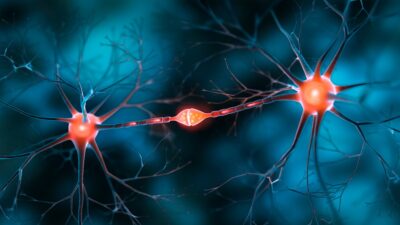The Enormous Economic Benefits of Targeting Aging
- This paper contrasts four different scenarios.

Using Peter Pan, Wolverine, and a powerful economic model, a trio of prominent scientists argues that slowing aging can bring gargantuan economic benefits – an order of magnitude bigger than previously thought [1].
The marriage of economics and geroscience
The paper, published in Nature Aging, looks rather unusual. It is co-authored by one of the leaders in geroscience, David Sinclair, and two prominent economists, Andrew J. Scott of the London Business School and Martin Ellison of the University of Oxford. It is full of economic jargon, and it deals with the economic value of fighting aging. While this question had been raised before by the proponents of the Longevity Dividend (LD) theory, such as Jay Olshansky [2], the new paper employs a different methodology and arrives at different results, albeit reinforcing LD’s point.
Why should we even consider the economic value of extending human lifespan and healthspan? Isn’t it a moral imperative to invest massive efforts in this enterprise? In an ideal world, maybe. In real life, though, decision makers must take the financial aspects into account. Today, increased longevity is associated with the growing mountain of expenses incurred by fighting the swarm of age-related diseases. An average person’s HLE (healthy life expectancy) is around 10 years shorter than their total lifespan, which means this last decade is spent in bad health and frailty, with the society sponsoring the increasingly expensive healthcare.
While modern society does invest considerable efforts in keeping the elderly alive, the returns on investment quickly diminish with age. According to the theory of competing risks, even if an elderly person has successfully evaded or fought off cancer, other age-related diseases will catch up with that person quite soon. This is the reason why even full eradication of cancer or any other age-related disease would increase average life expectancy only slightly. As Olshanski notes in his commentary on the paper, chronic fatal conditions are not independent of each other because they are underpinned by the same processes of biological aging [3].
Philanthropic and govenmental resources are both limited and distributed among many different social and economic programs. Causes compete for finances and attention, and this important paper aims to place fighting aging high on that list by arguing that it brings along enormous economic benefits.
To get decisionmakers’ attention, the authors base their research on the model called VSL – Value of Statistical Life. The obvious advantage of this approach is that this model is already widely used for making decisions that affect citizens’ lifespan and healthspan. To influence politicians, it is important to speak their language.
Is Peter Pan stronger than Wolverine?
The authors offer four scenarios corresponding to four different hypothetical ways in which life expectancy can be increased. They wittily chose to name those scenarios after famous fictional characters. The first one is named after Struldbruggs, one of the many strange peoples Jonathan Swift’s Gulliver encounters during his travels. Struldbruggs have discovered the secret of eternal life but not of eternal health. Therefore, Struldbruggs’ health diminishes indefinitely as they age, making them miserable and longing for death. This first scenario is about extending the maximal lifespan without a similar effect on healthspan. The authors then analyze the economic value of this particular type of life extension according to VSL.
The second is the “Dorian Grey scenario”, after the Oscar Wilde’s character who retained good health and youthful looks until his timely death, with his portrait soaking up all the damages of aging in his stead. This scenario corresponds to increasing healthspan without noticeably affecting lifespan.
The third scenario is named after Peter Pan – a character who ages, albeit very slowly. In this scenario, both healthspan and lifespan are increased, which corresponds to slowing aging. This scenario, the preferred one in terms of VSL, is precisely what geroscience is all about.
The fourth scenario, called Wolverine, is worth mentioning as well, though the authors admit that it is more hypothetical than the rest. This scenario imagines treatments that reverse aging. Hypothetical, but not outlandish. Some novel approaches currently in development, such as parabiosis, senolytics, and thymic rejuvenation, aim specifically at repairing the damages of aging.
In real world, healthspan and lifespan are, of course, interconnected, and one cannot be extended without affecting the other to some degree. Yet, those simplified scenarios are enough to prove that targeting aging itself is a superior strategy. According to the paper, not only is it superior to other types of life extension but also to eradication of any single age-related disease.
A real-life example
In a forceful move, the authors apply their model to an actual intervention that most probably works according to the Peter Pan scenario: metformin. Long before becoming a promising anti-aging drug, metformin had been prescribed to people with Type 2 diabetes. Yet, according to Nir Barzilai, the leading scientist behind the upcoming TAME (Targeting Aging with Metformin) study, diabetic people who receive metformin tend to live longer than diabetics on other medications and even longer than people without diabetes.
As Barlizai notes in his recent Lifespan.io interview, we cannot definitely say whether metformin also increases average human lifespan (it does moderately increase lifespan in model organisms), since such research would require decades to complete, but we can reasonably suggest that metformin works that way, since it seems to successfully slow the advance of numerous age-related diseases at once. When all the competing risks are addressed simultaneously, the result should be an extension of both healthspan and lifespan.
According to the paper, if metformin, a cheap, safe, and readily available drug, lives up to current estimates, its use as an anti-aging drug can bring enormous economic benefits.
Getting to the bottom line
The authors have calculated that just one year of average lifespan extension done the “Peter Pan way” – i.e., by slowing aging – will bring the US economy a benefit of 38 trillion dollars, and a 10-year gain would be a staggering 370 trillion. This is an order of magnitude larger than the previous estimates done by LD theorists. The main reason is that, according to the paper, there is a positive feedback loop at play: when we slow aging, older people stay healthier for longer, which means they value the next extension of their healthy lifespan even more. On top of that, the proportion of older people in the population grows, causing the overall value of life extension (as a sum of individual values) to increase.
The optimistic projection of this is that as soon as society makes a bold step that slows aging (such as approving wide use of metformin), the demand for further gains and their economic impact will both skyrocket.
We asked one of the co-authors, Andrew J. Scott, a few questions about the paper.
Could you explain in a few words the main takeaways and the importance of the paper?
We consider the economic value of various improvements in health and show that whilst longer lives are valuable, most valuable of all is making sure that both healthspan and lifespan increase – i.e., improvements that delay or reverse aging. Given how long people live and the rising incidence of age-related diseases, a focus on delaying aging has to be central to modern health systems. Treatments that delay aging bring forth multi-trillion-dollar benefits, as they reduce the incidence of numerous diseases and thus have a bigger impact on improving the quality of life. Further, the better we age and the more older people there are, the bigger the gains to delaying aging.
Who is the paper aimed at? Is it aimed primarily at decision makers?
We wanted to use sophisticated but standard tools of health economics to evaluate economic gains from treatments focused on aging. Too often, the longevity debate slips into discussions of science fiction and metaphysics, but we set the issue up as a health debate. Converting it into trillions of dollars seems the way to get greater focus and to shift the debate more into the worlds of decision makers sitting in finance ministries etc. That said, as an economist, I would say that there isn’t much study on the impacts of healthy longevity at later ages on the economy, and so I also want this paper to start a research theme, paying greater attention to the importance, opportunities, and problems that it could bring.
What do you expect the effect of the paper to be? What is your preferred outcome?
We would like to raise awareness of the practical value of tackling aging as a source of age-related diseases, increasing funding around biological pathways of aging and potential treatments arising from it, starting an economic debate about how we achieve the economic and health gains that healthy longevity can bring.
The COVID pandemic highlighted the case for adding infectious diseases to the list of age-related diseases. How does that impact your conclusions?
We calibrated our model using US health and mortality data but didn’t have any data which showed the influence of COVID. Allowing for COVID would obviously make the number even larger, although it’s hard to guess how much larger, but it would clearly be sizeable.
How do you see the relationship between the economic argument for life extension and the moral one?
In this paper, we treat anti-aging therapies as a health issue and like any other health intervention that leads to improvements in mortality and health. That means it’s separate from any moral issues. There always are, of course, moral issues involved in health treatments, and in arriving at a calculation of economic value, these are not taken into account. However, that is standard when applying this approach to any health intervention. I would hope that the modelling we do here might be useful to help frame moral debate in more concrete ways.
What were your reasons for illustrating your point with metformin?
Our paper is based on simulations and ‘what ifs’. There was a published study that presented some estimates of the impact of metformin on various age-related diseases, and that helped us calibrate our simulations in a more detailed way than just making assumptions.
Discussing metformin, you mention education as something that impacts health outcomes and, as such, can be considered an anti-aging intervention. Does the same logic apply to physical activity and healthy diet?
Absolutely. The methodology is very general. You evaluate the gains post and pre-treatment, and a broad range of things can be considered as treatments.
Your model does not account for income inequality. You mention this in the paper and add that a wide access to anti-aging therapies is needed in order to maximize the gains. Could you elaborate on this?
Healthy longevity is a function of many factors, including behavior, environment, healthcare systems, and available treatments. Whilst there is great interest in treatments that could target aging, the fact that large health inequalities exist today even in the absence of such treatments points to a range of behavioral and environmental factors that could be addressed. Life expectancy in the bottom 10% of the US income distribution is 14 years less than the top 10%. That speaks to the importance of socioeconomic determinants of health and longevity. When widespread gains in infant health were achieved, it was done through concerted public health efforts. Something similar needs to be done today at older ages.
Literature
[1] Scott, A.J., Ellison, M. & Sinclair, D.A. The economic value of targeting aging. Nat Aging (2021).
[2] Olshansky, S. J., Perry, D., Miller, R. A., & Butler, R. N. (2007). Pursuing the longevity dividend.
[3] Olshansky, S.J. Aging Like Struldbruggs, Dorian Gray or Peter Pan. Nat Aging (2021).







